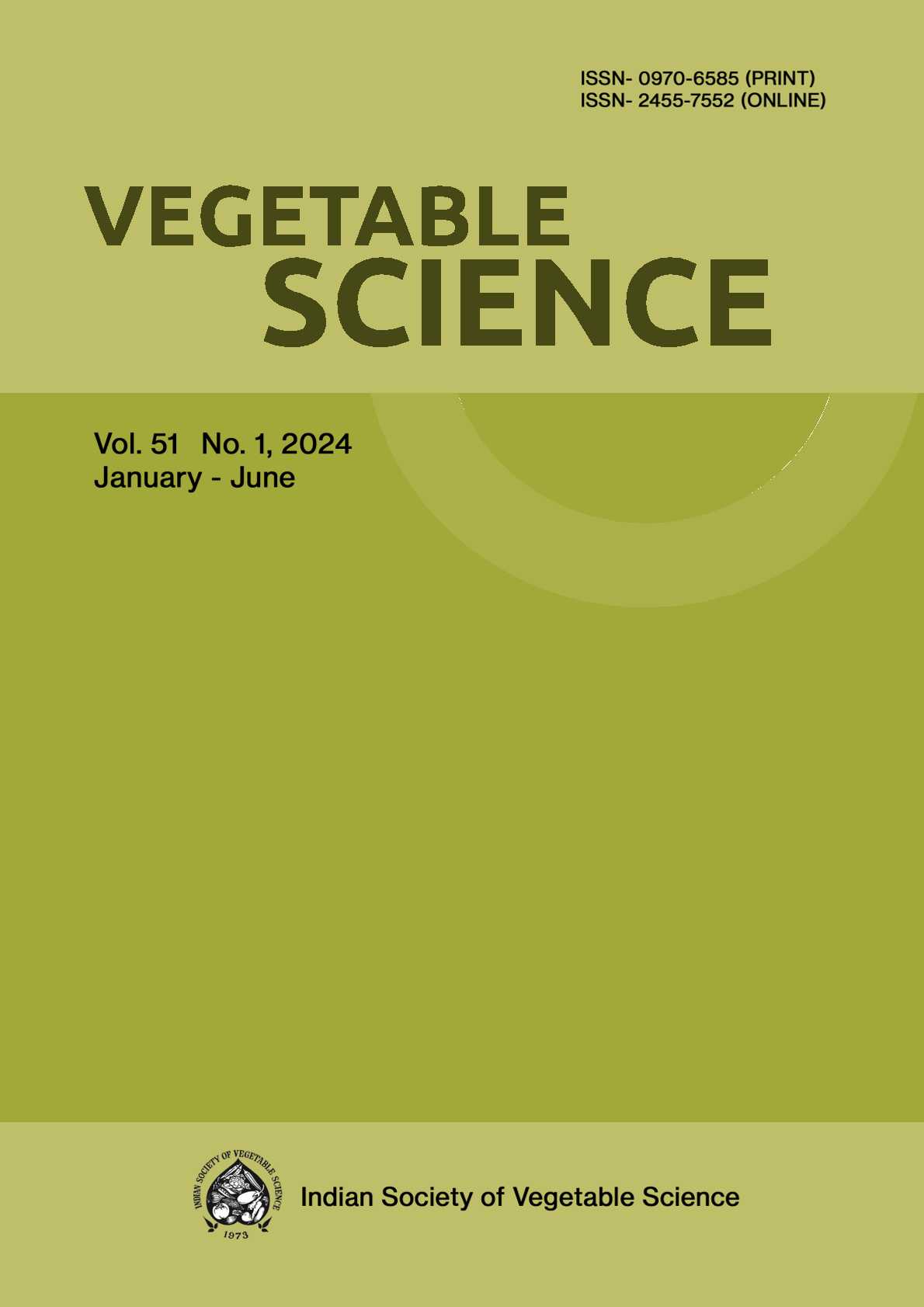Cowpea: Breeding and Genomics
DOI:
https://doi.org/10.61180/vegsci.2024.v51.i1.01Abstract
Cowpea (Vigna unguiculata L. Walp., 2n=2x=22) is a self-pollinating grain legume, fodder, and vegetable crop grown in a variety of tropical and subtropical climates around the world. Due to its nutritive value and soil improving properties, it is also used as a fodder, green manure and cover crop. Being a legume crop, cow pea fits well in inter-cropping system. Many biotic stresses such as diseases caused by fungus, bacteria and virus significantly affect the crop yield in cowpea. Apart from these, abiotic stresses such as drought, salinity stress and cold stresses are emerging problems. Therefore, it is required to breed many resistant varieties or genotypes through identification of resistant gene pools. Vegetable cowpea breeding programmes aim to develop the cowpea varieties for vegetable purpose with tender pods in bush or semi-determinate growth habits. Besides the development of high yielding varieties, resistance to diseases such as golden mosaic disease, Cercospora leaf spot and anthracnose, resistance to insect pests such as bruchids, pod borer and tolerance to abiotic stresses such as drought, salinity and high temperature stresses is important. To achieve this traditional breeding combined with molecular approaches such as marker assisted selection and genomic selection increases the precision of selection for desirable traits and also aids in the development of varieties with combined resistance to two or more diseases in less time. Genomic prediction and genomic selection schemes in cowpea showed considerable improvement predication accuracies and integrating with breeding schemes helps to enhance genetic gain.
Downloads
Published
Issue
Section
License
Copyright (c) 2024 T.S. Aghora , Hira Lal, B. R. Reddy, Mohan N., Mahadevaiah C., Thangam P., M. V. Dhananajaya , Nagana G. Patil, Indraja G., Rakesh K. Dubey, N. Rai , T. K. Behera (Author)

This work is licensed under a Creative Commons Attribution-NonCommercial-NoDerivatives 4.0 International License.






